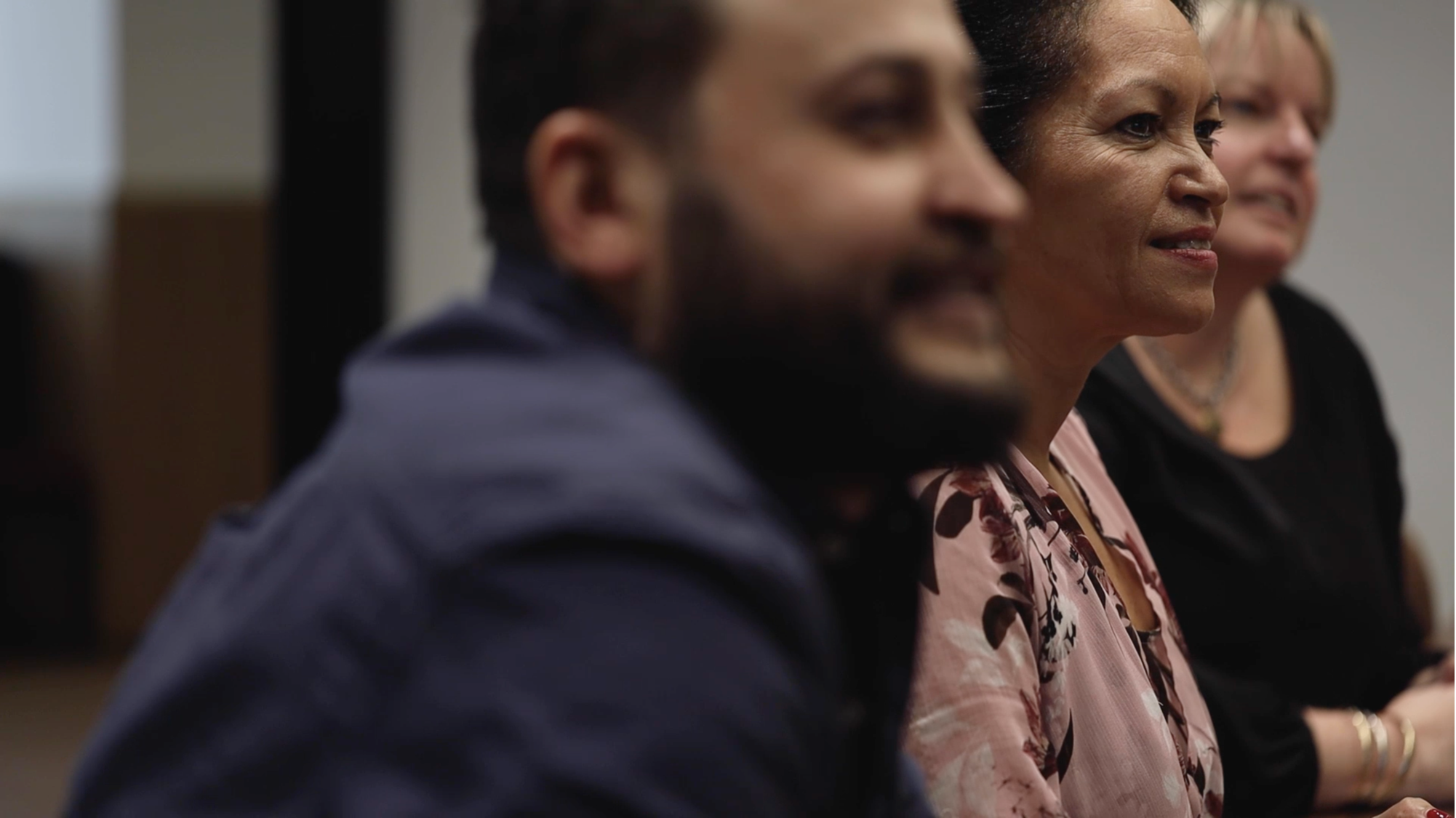Dashboards to help improve patient care in New Zealand's largest hospital

-
case study
Auckland District Health Board
Auckland City Hospital, run by Auckland District Health Board is the largest public hospital in New Zealand and the tenth largest in the world.
With 710 beds, 1,100 staff, and 120,000 patients coming through the facility annually, it’s a fast-paced, high-delivery environment.
Faced with Auckland’s growing and aging population, AHDB needed to optimise the use of hospital resources to meet demand and promote better patient outcomes. To help achieve this, ADHB decided to build an Integrated Operations Centre (IOC) to provide a central space for coordinating and monitoring activity in the hospital.
Alex Pimm, ADHB’s Director of Patient Management Services, says the overall goal of the Operations Centre was to bring together the right people and technology to make smarter, faster decisions.
“It’s about right place, right time, right care, right person: working to ensure patients are in the right place in the hospital, being treated by the right people, and all as quickly as possible."
The Challenge
Practically, this meant that the staff who help to run the hospital, including clinical nurse managers, patient flow facilitators, charge nurses, and senior managers on call, would be based together in the new, 24-hour, Operations Centre. They needed accurate, live information across hospital functions at a glance, so they could understand bed occupancy, patient care needs, and staffing requirements – and how one could impact the other.
But, with information shared across discrete spreadsheets and dense grids, data on how many beds were in use, or how many healthcare assistants were available at a given time was difficult to find quickly and share. “A lot of our data was collected manually,” says Pimm, “and required people to walk around the hospital, make phone calls, or log in to multiple systems.”
“We needed insights at our fingertips,” Vincent Cheah, Health Intelligence Delivery Manager for ADHB, adds. “But legacy systems, from before the hospital had grown to its current size, meant that to find the right insights you needed to look in several places. We needed an aggregated, consolidated view.”
With limited space in the IOC, a dashboard solution needed to take maximum advantage of the real estate. “Every piece of information on the dashboard had to lead to an action,” Cheah explains, “and the dashboards needed to follow best practice visualisation principles so staff wouldn’t have to search through the noise to find what they need.”
ADHB put together a project team and looked for a technology partner to collaborate with. “People are key”, Cheah says, “We’ve had Qrious with us for previous projects. We knew they were knowledgeable and capable consultants, with a strong history of delivery.”
So, they challenged the project team and Qrious to develop a data visualisation and dashboard solution for their IOC staff that was robust, easy to understand, and as close to real-time as possible.

"You can’t underestimate the effect that making smarter, faster operational decisions has on patient wellbeing. We’re positively impacting the services we provide at Auckland Hospital."
- Alex Pimm
Director for Patient Management Services, ADHB
The Solution
Reframing what was possible
“Our first priority,” Qrious Principal Consultant Chris Wyllie said, “was to ask, how can we make this better for the operational teams?” Qrious consultants worked in the ADHB project team with key personnel and product owners to understand how the insights and data should be presented to best suit their needs.
For example, did the team need to see all 710 beds on one screen, or simply how many were available per ward? What would enable the staff in the Integrated Operations Centre to make faster, smarter decisions?
From this process, the ADHB team reframed the way they approached the IOC dashboards and drilled down to key, actionable insights. “It’s fair to say,” Cheah recalls, “that we were very selective.”
A new cloud solution
In 2016, the New Zealand Government required public sector agencies to accelerate their adoption of public cloud services to help drive digital transformation. For forward-thinking CTOs, moving to the cloud offers exciting opportunities to streamline operations, improve collaboration and increase mobility in the workplace.
Qrious designed a solution using Microsoft Azure cloud services. With high availability and security standards, Azure provided a strong foundation for Auckland Hospital’s mission-critical Operations Centre. From there, ADHB could leverage Azure Analysis Services and PowerBI for their dashboarding solution.
Developed following agile principles, the Azure solution deployed brings together information aggregated from five different source systems. Available 24/7, the dashboard refreshes every 90 seconds with up-to-date data, and self-refreshes when unattended.
With the ADHB project team, Qrious built four dashboard views covering the bed, overall hospital, ward, and staff statuses, and upskilled the Health Intelligence team so they can maintain the solution in-house.
These are projected on the walls and displayed on digital screens in the Operations Centre, as well as being easily accessible via smartphone or tablet, so that hospital staff can access information when working remotely.
The Results
After extensive user testing, the dashboards went live in late 2019. Following a continuous improvement, continuous development model, the Health Intelligence team at ADHB has already made a couple of small iterations based on feedback from the IOC personnel.
“I genuinely think it’s one of the best things we’ve done in years,” Pimm says. “We created these dashboards to improve the care we provide to patients. Sometimes, it can be hard to understand the tangible link an IT system has to this. But you can’t underestimate the effect that making smarter, faster operational decisions has on patient wellbeing. We’re positively impacting the services we provide at Auckland Hospital.”
A platform ADHB can build on
With the infrastructure in place, Cheah says, “we’re able to evolve with the business and continually deliver,” adding that, “by moving us to the cloud and upskilling our team, Qrious has given us the ability to manage much of the solution in-house.”
With the initial rollout achieving a high adoption rate, the Health Intelligence team plans to build on the dashboards to create similar views for different contexts in the hospital, potentially rolling dashboards out across Maternity, Children, and Mental Health.
Breaking down the silos to improve overall operations
A key result, Cheah says, is that for the first time, operations personnel can see activities across different functions. “They’re able to see the flow-on effect if one team is slowed down,” Cheah says, “by reducing silos and showing a consolidated view, they’re better equipped to solve problems and improve the daily running of the hospital.”
The dashboards now form a starting point for shift meetings and handovers for nursing and ward staff, who have stand-ups around the dashboards in the IOC ahead of shifts.
Critical data in the hands of decision-makers
With access to live insights, staff can identify problems in real-time and swiftly take action. By following best practice visualisation principles, the dashboards Qrious have built with the team are easy to understand, offering IOC personnel the insights they need at a glance.
“The dashboards provide us with visibility of places where we can be operationally more efficient or address a staffing requirement. Having this data easily available for decision-makers improves the care we can provide to patients,” Pimm says.
Mobile capabilities for greater peace of mind
Power BI’s mobile capabilities have given hospital staff dashboards at their fingertips. The ability to remotely check on the general health of the facility offers greater peace of mind to senior managers, on-call 24/7 for emergencies. An added benefit, Cheah notes, is “onsite managers and remote managers can both see the same dashboard and have informed conversations.”
“I do on-call here”, Pimm says. “Now, when I’m off-site, I can pull up information, ask more intelligent questions, and make a better decision.”
“I have it on both my phones. I check the mobile dashboard on my way to work, so I can make a call at six am if something needs to be adjusted. It’s giving me more time to make decisions. The impact is huge.”
Lorem Ipsum
Lorem Ipsum
Lorem Ipsum
Lorem Ipsum
Lorem Ipsum
Lorem Ipsum
Lorem Ipsum

We're able to evolve with the business and continually deliver. By moving us to the cloud and up-skilling our team, Qrious has given us the ability to manage much of the solution in-house.
- Vincent Cheah, Health Intelligence Delivery Manager, ADHB
The Challenge
Module Title
Latest Case Studies
We’re in it together







Let’s start talking
If you’re ready to tap into the power of data, analytics and AI, we're ready to help. The first step is understanding what you need, so let’s start that conversation.










